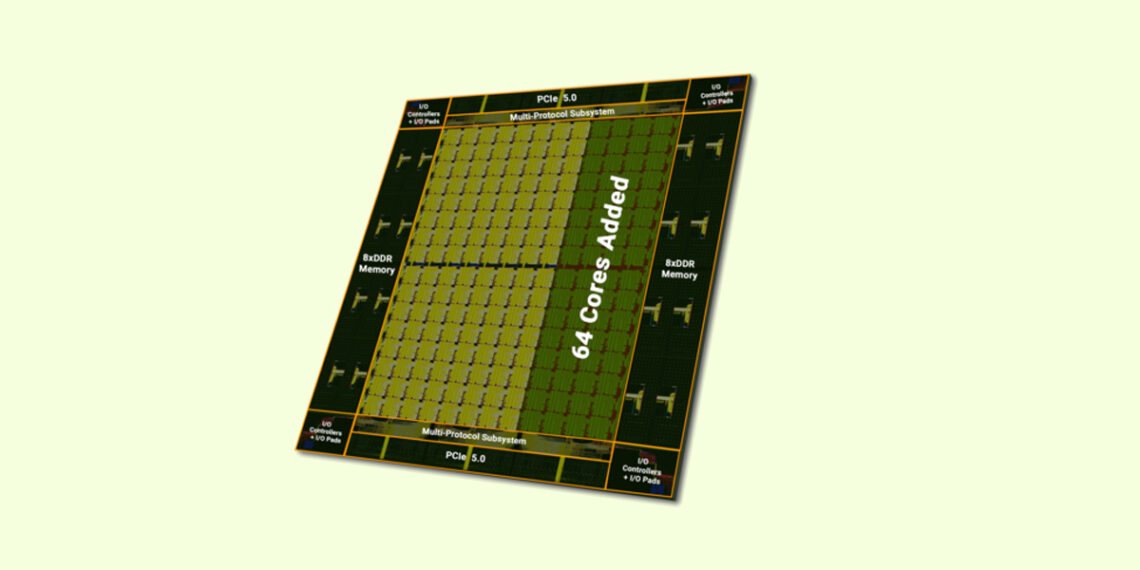In a remarkable stride towards innovation, Tachyum has announced a groundbreaking achievement in chip design, propelled by the adoption of advanced Electronic Design Automation (EDA) tools. The Prodigy Universal Processor, a revolutionary creation by Tachyum, has undergone a transformative enhancement, boasting an astonishing 192 cores, up from its previous configuration.
The breakthrough came after Tachyum’s Prodigy design team embarked on an ambitious journey, navigating through the intricacies of physical design. As part of this process, the team was compelled to replace Intellectual Properties (IPs) and subsequently overhaul RTL simulation and physical design tools. This strategic decision, though necessitated by circumstances, led to a cascade of improvements that have redefined the capabilities of the Prodigy Universal Processor.
Armed with the newly implemented EDA tools, Tachyum’s engineers meticulously tweaked and optimized various settings, ultimately achieving a remarkable 50 percent surge in the number of cores, an increase from the original count. Furthermore, the data transmission infrastructure saw a boost, with Serializers/Deserializers (SERDES) growing from 64 to 96 on each chip.
Remarkably, these advancements were realized with minimal impact on the chip’s footprint, as the die size expanded only slightly, from 500mm2 to 600mm2. This alteration accommodates the chip’s augmented capabilities, ensuring that it can efficiently utilize the enhanced physical design. It’s worth noting that the additional cores could have been incorporated within the chip’s size constraints, but such an approach might have resulted in memory bandwidth limitations.
The implications of these advancements extend beyond core count and size adjustments. The L2/L3 cache of the Prodigy chip received a substantial boost, growing from 128MB to an impressive 192MB. Additionally, support for DDR5 7200 memory was added alongside DDR5 6400, and the incorporation of 1 DIMM per channel led to heightened processing speeds. The chip’s larger package also accommodates a notable 32 additional serial links and as many as 32 DIMMs connected to a single Prodigy chip, opening up possibilities for enhanced data flow.
Dr. Radoslav Danilak, the visionary founder and CEO of Tachyum, expressed his enthusiasm about the transformative journey that brought the Prodigy Universal Processor to its current pinnacle. “At every step of the process in bringing Prodigy to market, our innovation allows us to push beyond the limits of traditional design and continue to exceed even our lofty design goals,” Dr. Danilak noted. He also acknowledged the potency of the new EDA physical design tools, acknowledging that their impact was so profound that he wished they had been adopted from the outset.
As a universal processor, the Prodigy architecture stands as a testament to Tachyum’s ingenuity. Seamlessly transitioning between standard CPU tasks and demanding AI/ML workloads, the Prodigy processor emerges as a powerhouse capable of delivering exceptional AI/ML performance, both in training and inference. This capability holds immense significance in sectors such as the banking industry, where AI/ML is instrumental in detecting fraud and thwarting cyberattacks before they escalate into substantial financial harm.
Beyond its AI prowess, the Prodigy Universal Processor introduces a new paradigm in data center performance, efficiency, and cost-effectiveness. By eliminating the need for dedicated AI hardware, the processor empowers data center servers to dynamically switch between various workloads, thereby maximizing server utilization and reducing both capital and operational expenditures. The Prodigy processor boasts performance metrics that surpass even the highest-performing x86 processors for cloud workloads, as well as GPUs for high-performance computing and AI applications.
With this remarkable achievement now in the rearview mirror, Tachyum is set to embark on the next phase of its journey, focusing on the completion of substrate package and socket designs to accommodate even more Serializers/Deserializers (SERDES) lines. The delivery of the first Prodigy high-performance processors remains on track, with expectations of a groundbreaking release by the end of the year. As the tech world eagerly awaits this revolutionary advancement, Tachyum’s strides in chip design signal a new era of computational prowess.






